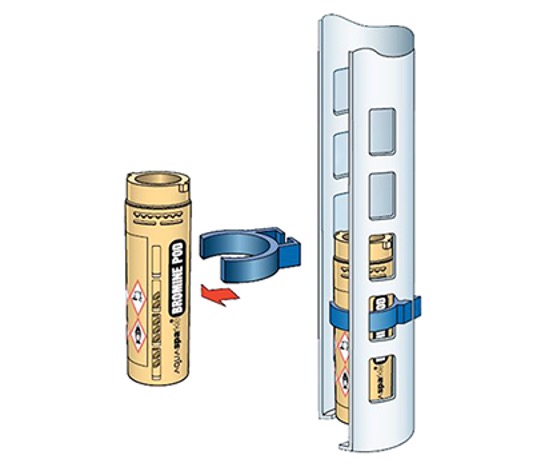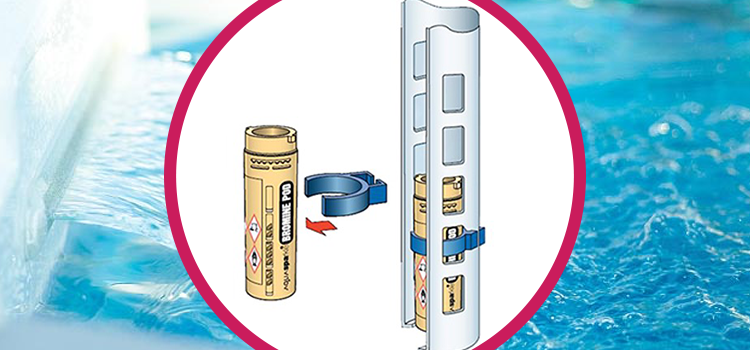Chlorine vs Bromine: Which One Should You Choose for Your Hot Tub?
When it comes to maintaining a clean and sanitary hot tub, there are two main options for disinfecting the water: chlorine and bromine. Both of these chemicals are commonly used in hot tubs and pools, but many people wonder which one is the better choice for their specific hot tub. In this blog post, we will discuss the differences between using chlorine and bromine in a hot tub, and help you determine which one is the right choice for your needs. So if you’re a proud owner of a chlorine hot tub or bromine hot tub, keep reading to learn more about these two disinfectants and make an informed decision for your hot tub maintenance.
Understanding the Basics: What are Chlorine and Bromine?
Chlorine and bromine are two popular sanitisers used to maintain clean and bacteria-free water in hot tubs. Both chemicals are effective at killing harmful bacteria and viruses, ensuring a safe and enjoyable hot tub experience.
Chlorine is a widely used sanitiser that is known for its powerful disinfecting properties. It works by releasing chlorine gas into the water, which breaks down organic matter and kills bacteria and algae. Chlorine is available in various forms, including granules, tablets, and liquid, making it easy to find and use. However, chlorine can be harsh on the skin and eyes, and some people may experience irritation or allergic reactions.
On the other hand, bromine is a less commonly used but equally effective sanitiser for hot tubs. Bromine is more stable than chlorine, allowing it to remain active in the water for a longer period of time. It is also less irritating to the skin and eyes, making it a popular choice for individuals with sensitive skin. However, bromine can be more expensive than chlorine and may require more frequent monitoring and adjustment.
Pros and Cons of Using Chlorine in a Hot Tub
Using chlorine as a sanitiser in your hot tub comes with its own set of pros and cons. Let’s dive in and explore the advantages and disadvantages of using chlorine.
- Effectiveness: Chlorine is a powerful disinfectant that effectively kills bacteria, viruses, and other microorganisms that can thrive in hot tub water. It provides reliable sanitisation, ensuring that your hot tub water remains clean and safe to use.
- Availability: Chlorine is readily available in various forms, such as granules, tablets, and liquid, making it easy to find and use. This convenience allows for easier maintenance of your hot tub’s sanitisation levels.
- Skin and Eye Irritation: One of the downsides of using chlorine is its potential to cause skin and eye irritation. Some people may experience dryness, itchiness, redness, or burning sensations when exposed to chlorine-treated water. It is important to take precautions, such as rinsing off after hot tub use and using moisturisers or eye drops if necessary.
- Odour: Chlorine has a distinct odour that some people may find unpleasant. This can linger in the air surrounding the hot tub, and it may be particularly noticeable when the hot tub cover is opened. However, using a high-quality hot tub filter and regularly maintaining water balance can help minimise the odour.
While chlorine is a popular choice for hot tub sanitisation due to its effectiveness and availability, it is essential to consider the potential drawbacks. If you have sensitive skin or are prone to allergies, it is worth exploring other alternatives, such as bromine, to ensure a more comfortable and enjoyable hot tub experience.
Advantages and Drawbacks of Using Bromine in a Hot Tub
Using bromine as a sanitiser in your hot tub offers several advantages and drawbacks to consider. Let’s explore these in detail.
- Longer Lasting: Bromine has a unique advantage over chlorine in that it remains active in the water for a longer period of time. This means that you won’t need to add it as frequently, reducing the amount of time spent on maintenance.
- Less Irritation: If you have sensitive skin or are prone to allergies, bromine may be a better option for you. Unlike chlorine, bromine is less likely to cause skin and eye irritation. It is also gentler on the skin, making it a great choice for those with sensitive skin.
- Cost: One of the drawbacks of using bromine is its cost. Bromine is generally more expensive than chlorine, which can add up over time. However, some people find the benefits of bromine outweigh the additional cost.
- Monitoring and Adjustment: Bromine levels in your hot tub water need to be monitored and adjusted regularly to ensure they are within the optimal range. This can require more effort and attention compared to using chlorine.
Ultimately, the decision between using chlorine or bromine in your hot tub depends on your specific needs and preferences. If you have sensitive skin and are willing to invest in a slightly more expensive sanitiser, bromine may be the better choice for you. However, if you prefer a more cost-effective option and are willing to take precautions to minimise irritation, chlorine can still provide effective sanitisation for your hot tub. Consider your priorities and make an informed decision based on what works best for you.
Comparison Between Chlorine and Bromine for Hot Tub Usage
When it comes to comparing chlorine and bromine for hot tub usage, there are a few key factors to consider. First and foremost, both chemicals are effective at killing bacteria and ensuring a safe and clean hot tub experience. However, there are some differences that may sway your decision.
Chlorine is known for its powerful disinfecting properties and availability in various forms, making it convenient for hot tub maintenance. It is highly effective at sanitising water, but it can be harsh on the skin and eyes, potentially causing irritation or allergic reactions. Additionally, chlorine has a distinct odour that some people find unpleasant.
On the other hand, bromine is less commonly used but equally effective as a sanitiser. It has the advantage of lasting longer in the water, meaning you won’t have to add it as frequently. It is also gentler on the skin and eyes, making it a preferred choice for those with sensitive skin. However, bromine is generally more expensive than chlorine and requires more monitoring and adjustment.
Determining the Right Choice for Your Hot Tub
Choosing the right sanitiser for your hot tub is an important decision that can greatly impact your hot tub maintenance routine and your overall hot tub experience. After considering the pros and cons of using chlorine and bromine, it’s time to determine which one is the best choice for your hot tub.
First, consider your priorities. If you have sensitive skin or are prone to allergies, bromine may be the better option for you. Its gentler nature and lower likelihood of causing irritation make it a great choice for individuals with sensitive skin. On the other hand, if you prefer a more cost-effective option and are willing to take precautions to minimise irritation, chlorine can still provide effective sanitisation for your hot tub.
Additionally, think about the effort you are willing to put into maintaining your hot tub. Chlorine requires less monitoring and adjustment, making it a convenient choice for those who want a hassle-free maintenance routine. However, if you don’t mind the extra effort of monitoring bromine levels and are willing to invest a bit more money, bromine may be worth considering for its longer-lasting sanitisation properties.
Ultimately, the right choice for your hot tub depends on your specific needs, preferences, and priorities. Consider what matters most to you and make an informed decision based on what works best for you. Whether you choose chlorine or bromine, both sanitising options will ensure that your hot tub water remains clean, clear, and bacteria-free, providing you with a safe and enjoyable hot tub experience.
Can I use a Darlly Sanistream SpaPod with a Frog inline sanitiser holder?
Can I use a Darlly Sanistream SpaPod with a Frog inline sanitiser holder?
The good news is YES!!!!
The refillable Darlly Sanistream SpaPod will fit the Frog inline sanitiser system with the addition of a small clip to secure it in place. The clip is available from your usual Darlly filter supplier, part number DL817.

The Darlly Sanistream pod is refillable with your own choice of sanitiser tablets.
There is no need to buy a new pod whenever it is empty, simply refill with your choice of chlorine or bromine tablets. This is a more economical and environmentally friendly solution to continually replacing the single use pods each time the pod becomes empty.
The AquaSPArkle pre-filled Bromine pods will also clip into place using the same method if you prefer to use pre-filled pods as shown above.
Part numbers for Darlly SaniStream, SpaPod and AquaSparkle
Follow the links below for more information:-
Darlly Sanistream SpaPod DL815
Darlly Sanistream SpaPod clip DL817
Aquasparkle pre-filled Bromine Pod DL900
How to use the pods with the Frog built-in inline dosing system
To attach the Darlly SpaPod or AquaSPArkle Bromine Pod to the built-in chemical dispenser support, simply snap the clip onto the pod, and then snap the other end of the clip onto the hot tub dispenser support as shown in the illustration.
Ensure that the adaptor clip is securely attached both to the pod, and also to the inline dosing dispenser frame.
Don’t forget to adjust the dosing of the pod(s) before refitting.
Can I use SpaPod with Frog inline Sanitiser holder? Now you know, Yes you can!
If you have any questions or suggestions for Filter Care topics, then please do not hesitate to get in contact, we are always happy to help.
Happy Hot Tubbing!
The Darlly Team

